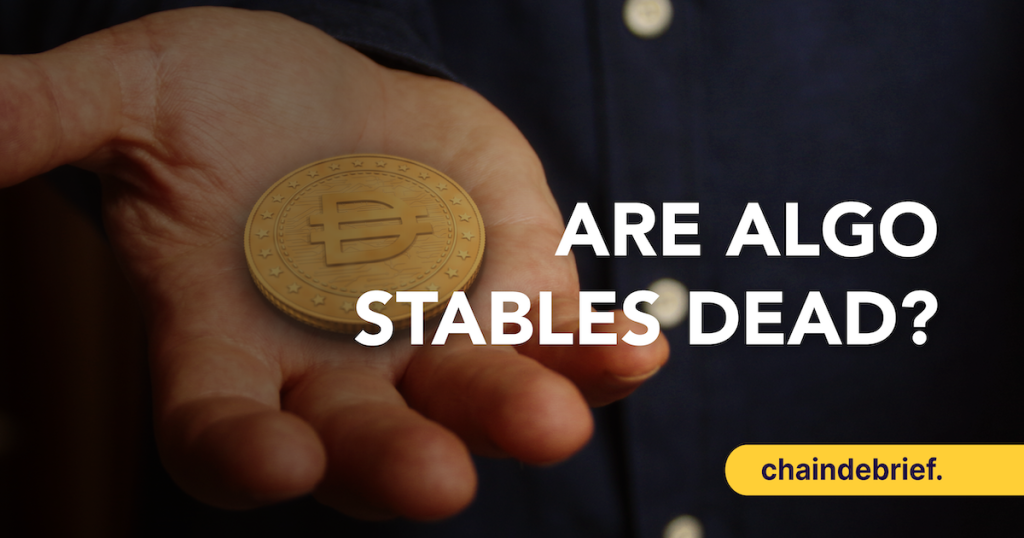With the fall of Terra, fear in the crypto markets has reached all-time highs. Being a multi-billion dollar asset, $LUNA’s collapse is currently being felt across crypto.
From oracle exploits to entire ecosystems tanking, many are steering clear of algo-stables for the foreseeable future.
Also Read: What Happened To $LUNA? How It Crashed More Than 95% From Its All-Time High
However, $USN and $USDD, two projects in the same vein, are still being built. So, will these two new stablecoins finally succeed, or will see another massive crash eventually?
USDD
Just weeks before $UST’s death spiral, Justin Sun, founder of the Tron Network, announced the launch of $USDD. Much like $UST, $USDD is minted via burning $TRX, and vice versa.
As such, its peg is also maintained through arbitrage opportunities — contracting and expanding the supply of $USDD. It also implements the same features Terra had, such as a Tobin tax and spread fees for transactions between their native stablecoin.
#USDD mining is live now on https://t.co/AzvfhEjc3G with 40% APR. You can now deposit your #USDD in Justlend. pic.twitter.com/6WhX9fhpEP
— H.E. Justin Sun 🅣🌞🇬🇩 (@justinsuntron) May 12, 2022
While 40% APRs were initially offered on $USDD, it has since been brought down to around 20% APY. This is likely due to the US$300 million currently supplied to farm rewards. Borrow APY is trending near 9%, with additional rewards being sustained via TRON DAO reserves.
In a recent interview with Coindesk, Sun noted some learning points from the $UST fiasco:
- Over-leveraging in the Terra ecosystem
- Luna grew too fast, did not cut Anchor interest rates after hyper-growth
- Lack of diverse collateral
- Users could withdraw $UST at any time while profiting from high rates
He indicates that the treasury for $USDD currently largely comprises of other stablecoins such as $USDT and $USDC, but also $BTC and $TRX.
Plans to introduce a locking period for higher rates are also in the works.
USN
Built by Decentral Bank, $USN is an algo-stablecoin native to the Near network. Like $UST, it maintains its peg through arbitrage opportunities, where users can always mint $1 of $USN for $1 of $NEAR, and vice versa.
1/ $USN is an OVERCOLLATERALIZED stablecoin. $USN combines on-chain arbitrage with a Reserve Fund, which is DOUBLE-collaterized at first w $NEAR & $USDT.
— Decentral Bank (@DcntrlBank) May 11, 2022
In a worst case scenario, Decentral Bank would be able to buy back the entire amount of $USN ever issued.
However, it is also backed by a basket of $NEAR and other stablecoins. At the current market cap of $USN, the protocol can buy back the total supply with its reserves.
Currently, Decentral Bank is promising a minimum of 11% APY on $USN, with uncapped upside. This rate comes from natural borrowing, supplemented by Decentral DAO’s $NEAR staking rewards.
They seek to prevent a similar “Death Spiral” by:
- In the event of massive $NEAR price depreciation — buy $NEAR using stablecoin reserves
- $USN depeg to the downside — have sufficient funds to cover the entire $USN market cap
Is this time different?
Terra’s collapse was not due to some tactical mistake or something that can be fixed with tweaks to the incentives, the model is fundamentally broken
— Bennett Tomlin (@BennettTomlin) May 13, 2022
While $USDD and $USN state that they have contingency plans in case of a death spiral, the similarities of their mechanism to $UST makes that hard to believe.
The main differences they point to are the strength of their reserves as well as sustainable growth. $USDD, in particular, is backed by Justin Sun, an early crypto investor with deep pockets.
However, we all know that Terra’s reserves were drained regularly to uphold unsustainable returns, even with notable funding.
Unless there is more innovation, it is safe to say that algo-stables will not be successful.
Closing thoughts
While algo-stables in this form may never return to the spotlight, their message still holds.
My thoughts and takeaways today:
— Emin Gün Sirer🔺 (@el33th4xor) May 10, 2022
1. We need a decentralized stablecoin. Fiat-backed stables are subject to legal seizure and capture. A decentralized economy needs a decentralized stablecoin whose backing store cannot be frozen or confiscated.
The ability for centralized authorities like Tether and Circle to freeze your assets on-chain goes against the decentralized spirit of Web3. Moreover, the legitimacy of their collateral often comes into question.
Over-collateralized stables such as $MIM and $DAI, on the other hand, bring about capital inefficiency. Their collateral also often involves centralized assets or stablecoins.
Surprisingly, $FRAX, a “fractional-algorithmic” stablecoin has held up well during this flight to fiat-based stablecoins. This bodes well for investor trust in innovation, and their strength during tumultuous market conditions is a positive sign for the project.
Also read: What is Frax Finance? All You Need To Know About The World’s First Fractional-Algorithmic Stablecoin
What is clear, though, is the need for deeper liquidity and more efficient systems when creating decentralized, non-collateralized stablecoins.
Featured Image Credit:
Also Read: “UST Is A Done Deal,” — Key Insights From Luna Crash Debrief With Insiders



































